Cash transactions are a problem for busy stores and crowded stations. Businesses that handle large amounts of cash face increasing pressure every day. They must process payments faster and reduce costly human errors.
Cash kiosks give a safe and reliable way for customers to pay without staff. For retailers, transit systems, and government offices, the right kiosk setup matters. The setup impacts both customer experience and daily efficiency. This guide explains how cash kiosks work and the industries that derive the most value from them. You’ll also see how to choose and test the right kiosk before rollout.
What are Cash Kiosks?
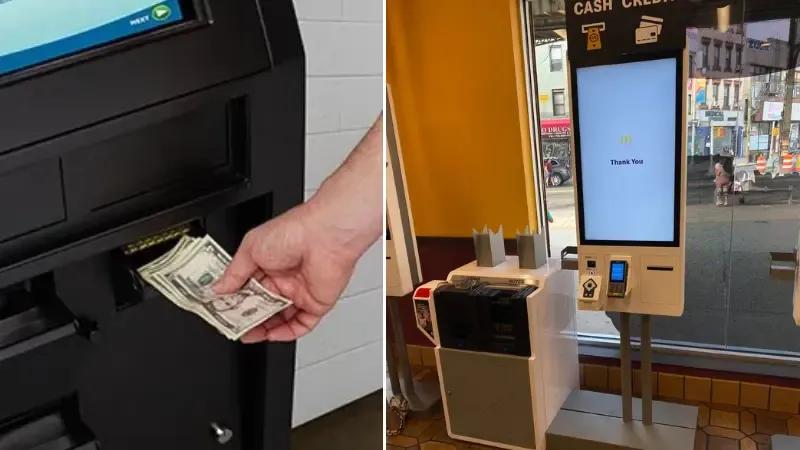
Cash kiosks are machines that handle cash without needing staff. They accept cash, process checks, and store them during each payment. A cash payment kiosk includes a note validator, coin acceptor, printer, and locked cash box.
All parts work together inside a single, compact machine.
Bill payment kiosks process many transactions in stores, utility offices, and stations. For operators, they cut manual work and improve cash accuracy.
Types & form-factors
- Floor-standing kiosks – handle high throughput in supermarkets, transit hubs, and utility centers.
- Countertop models: Fit smaller stores or service desks with moderate traffic.
- Wall-mounted kiosks: Save space in small areas like utility offices or service centers.
- Compact paypoints: Ideal for busy stores with limited floor space.
Functional variants
- Cash-in only – accept deposits and issue receipts, no change dispensed.
- Cash-in/cash-out – accept payments and return change or vouchers.
- Cash recycler kiosks – reuse accepted notes to give change, reducing refill trips.
- Mixed-payment kiosks – take cash, cards, and mobile wallets in one device.
How Cash Payment Kiosks Actually Work
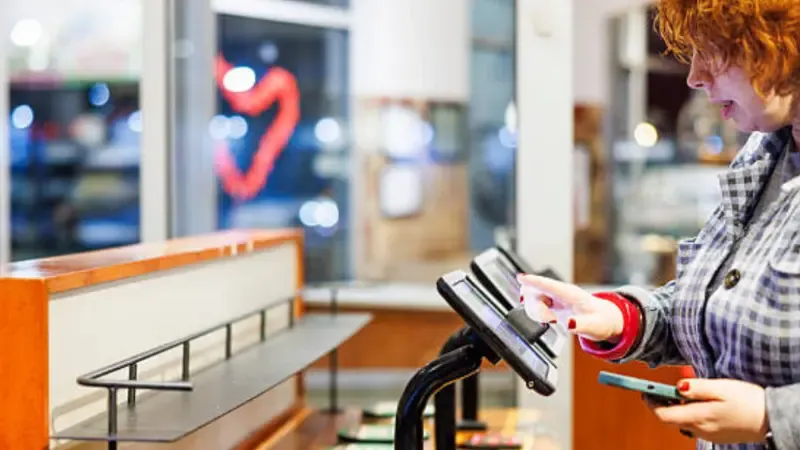
Cash kiosks work through connected hardware, software, and back-end systems.
The process reduces human error and ensures secure cash handling.
It also maintains consistent records across all connected systems. Buying teams study this process to check reliability and return on investment.
The Customer Transaction Flow
The kiosk walks customers through each step and records every action.
- The customer selects the service or bill type on the touchscreen.
- The machine prompts for cash payment.
- Bills and coins validation for authenticity.
- Lock the accepted money inside or reuse it to give change.
- A receipt prints, and the backend confirms the transaction.
This process stays the same for most cash kiosks. Speed and cash capacity depend on the kiosk model.
Core Hardware Components
Each kiosk has key components that ensure payments are secure and accurate. These include the bill acceptor, coin mechanism, cash recycler, CPU, touchscreen, and printer. Hybrid kiosks also come with card readers.
Security sensors prevent tampering or attempts to withdraw cash.
The hardware you choose affects speed and service needs. High-volume environments often need larger recyclers and reinforced safes.
Software & Integration Stack
The software runs the kiosk and connects it to your main business systems.
A kiosk uses a secure operating system with a payment app on top. The app controls all user interactions during the transaction.
- Monitoring tools track performance and uptime.
- APIs send transaction data to POS, ERP, or accounting software.
- Cloud dashboards let teams track and balance payments from anywhere. This enables operators to reduce downtime and address exceptions in real-time.
Transaction Processing & Reconciliation
Each payment creates a digital record that must match system totals. Validation can run online through a gateway. It can also run offline when the connection drops.
Customers receive a receipt or reference number as proof of payment. At the end of the day, kiosk totals reconcile with central accounting. Remote reports help plan cash pickup and delivery.
Hybrid kiosks follow PCI DSS and EMV rules to keep card payments safe.
Business Benefits (what Decision-makers Care About)

Cash kiosks deliver measurable gains for operators. They enhance service quality, reduce costs, and improve cash flow management. Buyers usually focus on ROI, transaction speed, and scalability. Restaurants report that kiosks ‘pay more than they cost’ by cutting labor and boosting sales.
Customer Experience and Accessibility
Self-service kiosks shorten wait times and allow round-the-clock payments. They also serve customers who rely only on cash. A study in the International Journal of Hospitality Management shows that kiosks reduce customer waiting times.
Shorter queues measured by average transaction time.
- 24/7 payment options in unattended environments.
- Inclusive access is tracked by the share of cash users served.
These outcomes help businesses widen their customer base without adding front-line staff.
Operational efficiency
Cash kiosks reduce manual handling of payments. Staff spend less time counting or fixing cash errors.
- Labor savings are measured by staff hours reallocated.
- Lower error rates are tracked by reconciliation variance.
- Faster settlement cycles reduce end-of-day balancing time.
In hospitality settings, some operations reported a staff workload drop of around 30% after kiosk deployment. These numbers show clear savings for managers.
Security and Accountability
Kiosks use locked safes and digital logs to protect cash. Remote checks let teams observe all locations at once.
- Reduced shrinkage measured by cash variance.
- Higher accountability is tracked by digital audit logs.
- Lower risk exposure measured by incident reports.
Stronger controls improve both compliance and trust.
Revenue and Cost Impact

Automated kiosks handle more payments per hour than staff. They also earn extra income from prepaid or ticket services.
- Throughput is measured in transactions per hour per kiosk.
- Added revenue streams tracked by new service categories.
- Reduced shrink measured as a percentage of total cash handled.
This creates a clear case for ROI modeling.
Scalability and Hybrid Payments
Kiosks integrate into broader payment ecosystems, complementing cards and mobile wallets. This creates omnichannel flexibility while maintaining the option of using cash.
- Adoption is measured by the share of transactions by channel.
- Scale is measured by uptime and transaction volume across sites.
The adoption of contactless payments among younger shoppers demonstrates that omnichannel flexibility is more important than ever.
Where Businesses Can Use Cash Kiosks (Vertical-Specific Guidance)

Many industries use cash kiosks, but their needs are different. Buyers focus on speed, compliance, system fit, and durability.
Retail and Supermarkets
In retail, kiosks handle fast-moving payment environments. They process high transaction volumes during peak hours and support multi-tender payments. Deployment varies. Some kiosks go in lobbies for fast use, others inside stores.
For retailers, the benefits include shorter queues, faster turnover, and reduced checkout staffing.
Transit and Parking
Transit and parking operators rely on kiosks to keep passengers moving. Machines need durable printers, easy-to-update fare logic, and hardware designed for continuous use. Uptime and tough build matter because downtime affects passengers.
When kiosks are operational, they maintain a steady flow of passengers.
Utilities and Government Payments
Utility and government kiosks must follow payment rules and keep full records. Each transaction should give a clear receipt and show a reference number. Centralized reconciliation ensures funds align with accounting systems. For agencies, kiosks reduce manual counters while meeting strict reporting standards.
Healthcare and Service Counters
Hospitals and clinics use kiosks to manage patient billing. Integration with hospital systems enables secure payments. It gives instant proof of payment for patients.
Privacy tools cut desk lines and free up staff to focus on patients.
Privacy features are essential in this setting. The outcome is less congestion at service desks. And more staff time is available for patient care.
Convenience and Remittance Networks
In cash-based communities, kiosks expand financial access.
They let people pay bills or send money without going to a branch. Kiosk networks widen service reach through simple interfaces and secure cash handling. For operators, the benefit lies in serving underbanked populations at scale.
Procurement & Implementation Checklist (How to Estimate Vendors)
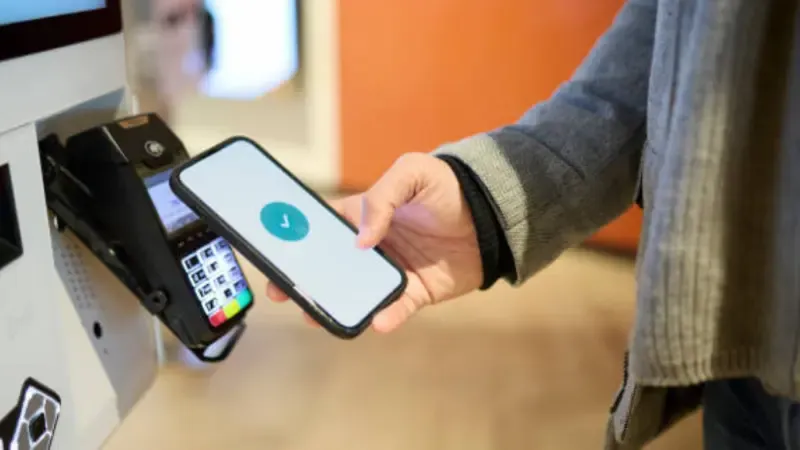
Choosing a kiosk vendor needs a clear plan. A checklist helps teams define needs, compare vendors, and write strong RFPs.
- Functional Requirements
Define the types of transactions the kiosk must support. Determine the type of functionality you require.
Confirm receipt and ticketing options, including printer specifications for volume and durability.
- Performance and Throughput
Measure expected transactions per hour. Consider bill and coin acceptance speed, as well as the time taken to dispense change.
High-volume environments should set the lowest benchmarks before issuing RFPs.
- Integration and APIs
Check for compatibility with POS and ERP systems. Busy sites should define their reduced speed before sending RFPs.
Check that tokenization keeps your integrations safe.
- Security and Compliance
Demand PCI compliance for any card processing modules. Review OS security, safe locks, and certifications.
Ask if the kiosks include tamper sensors and digital audit logs.
- Maintainability and Support
Check if the vendor provides remote monitoring tools. Review service-level agreements for uptime.
Ask about spare part availability and the presence of local service partners.
- Costs and total cost of Ownership
Include every cost: hardware, setup, internet, cash collection, and software or cloud fees.
Estimate the total cost over five years.
- Pilot and proof-of-concept
Plan for a 60–90 day pilot at a high-volume site.
Set key goals, such as speed, uptime, and accuracy.
Agree on success criteria before full deployment. Always ask for vendor references from similar businesses.
Security, Compliance & Operations (What Keeps Payments Safe & Auditable)
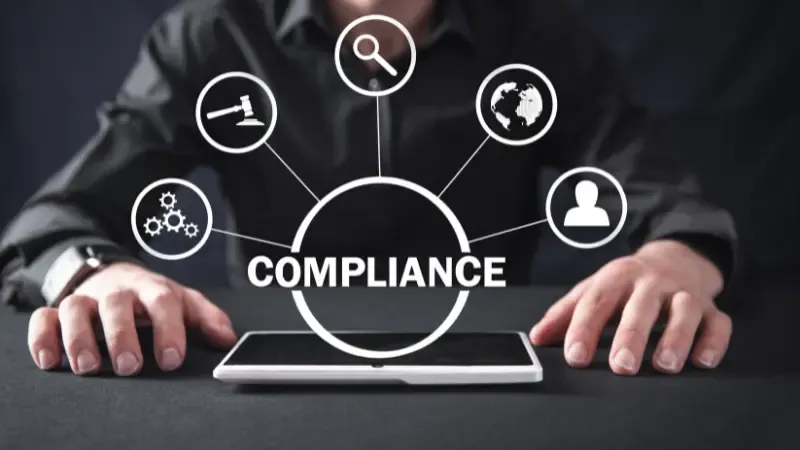
Because kiosks process large amounts of data, security and compliance are key.
Procurement teams must review both physical protections and data safety.
Physical security
The hardware must stop theft or tampering. Safe grades define resistance to forced entry.
Anti-fishing sensors block the retrieval of inserted notes or coins. Mounting options and IP/IK ratings ensure the kiosk stays durable in public or outdoor areas.
Payment and data security
When kiosks accept cards, PCI compliance is mandatory.
Data must flow through TLS-encrypted channels, with tokenization to protect card details. EMV-certified readers improve compliance. Vendors should also provide proof of certification.
Operational controls
Strong reconciliation processes reduce errors and fraud.
This includes daily audit logs and exception handling protocols. It also contains defined cash pick-up schedules with armored services.
Remote monitoring helps central teams detect discrepancies before they escalate.
Regulatory concerns
High-value cash transactions may trigger anti-money laundering (AML) rules.
Operators should check local reporting limits. And make sure kiosk workflows meet legal requirements. Consult with compliance teams or regulators before deployment.
Cash Kiosks vs Other Payment Methods (How They Fit in a Hybrid World)
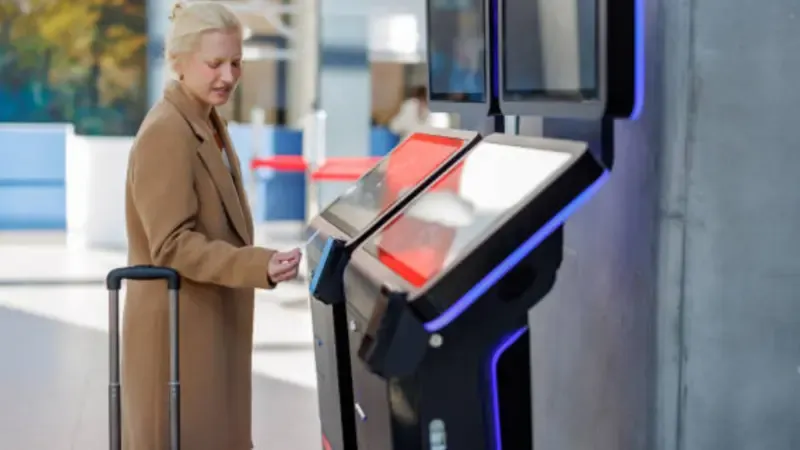
Decision-makers rarely choose between cash and digital payments in isolation. The goal is to match payment acceptance to customer habits and operational costs.
When to Prefer Cash Kiosks
Cash kiosks serve locations where cash remains the dominant payment method. They ease teller workloads, manage heavy cash flow, and serve unbanked customers.
When to Use a Card or Contactless Payments
Card-only or contactless kiosks make sense in low-cash environments. They reduce cash handling costs, simplify reconciliation, and shorten settlement cycles.
Best Practice: Hybrid Kiosks
The most resilient model combines cash, cards, and mobile payments into a single unit. Hybrid payment kiosks maximize customer coverage. And it protects operators against shifts in payment trends.
Future Trends & ROI Expectations (what to plan for next 3–5 years)
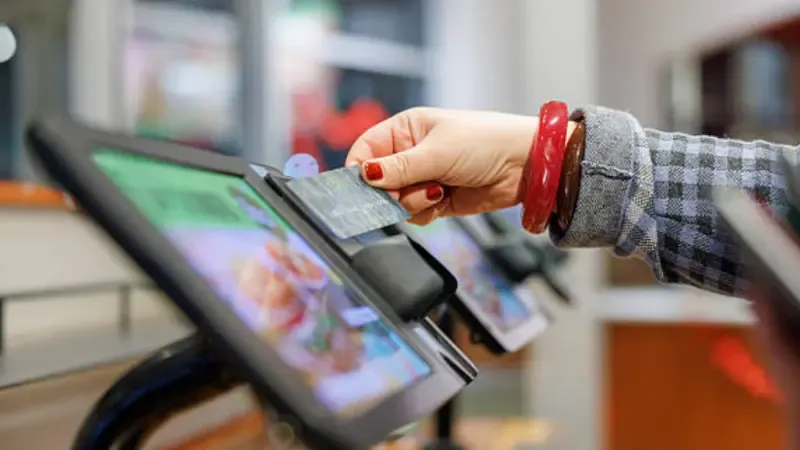
Cash kiosks continue to evolve as part of the wider payment ecosystem. Buyers now focus on smart features that extend lifespan and improve returns.
Trends Shaping the Future of Payment Kiosks
Operators are investing in remote management and IoT telemetry. So they can measure uptime and performance.
Multi-service kiosks combine bill pay, top-ups, and ticketing in one unit.
Cash recyclers reduce replenishment cycles and cut armored transport costs.
Kiosks that bridge digital wallets with cash acceptance are also on the rise.
ROI Signals to Track
Return on investment comes from measurable gains. Cash processing costs drop with recyclers and automated reconciliation.
Customer throughput improves when kiosks shorten queues and extend service hours. Incremental revenue arrives through prepaid services, ticketing, or remittances.
FAQs About Cash Kiosks & Payment Kiosks
How much does a cash kiosk cost to buy and deploy?
A cash kiosk can range from $5,000 – $15,000, depending on hardware, features, and integration needs. Final costs vary by volume, location, and service contracts.
Are cash kiosks secure against theft and the risk of counterfeit bills?
Yes. Modern kiosks use bill validators, reinforced safes, and automatic reconciliation. It makes them as secure as traditional teller transactions.
Can cash payment kiosks integrate with my POS or billing system?
Most kiosks support APIs or middleware to connect with POS, billing, or ERP platforms. Ensuring accurate transaction posting and seamless back-office reporting.
How long does a typical rollout take?
A proof-of-concept can go live in weeks, with full phased deployment often taking 3–6 months. It depends on site count, vendor coordination, and compliance needs.
Do cash kiosks work in 24/7 outdoor locations?
Yes, when specified for outdoor use. Enclosures with IP/IK protection and heating/cooling capabilities ensure reliability in extreme weather conditions.
Final Take: Moving Forward with Cash Payment Kiosks
Cash payment kiosks are no longer side tools. They’re becoming core to modern payment strategies. The industry is shifting from security and compliance to hybrid adoption and ROI.
The real advantage lies in planning early and piloting with the right partner.
Ready to explore a pilot?
Connect with a kiosk vendor today to discover how a tailored rollout can enhance your operations.



